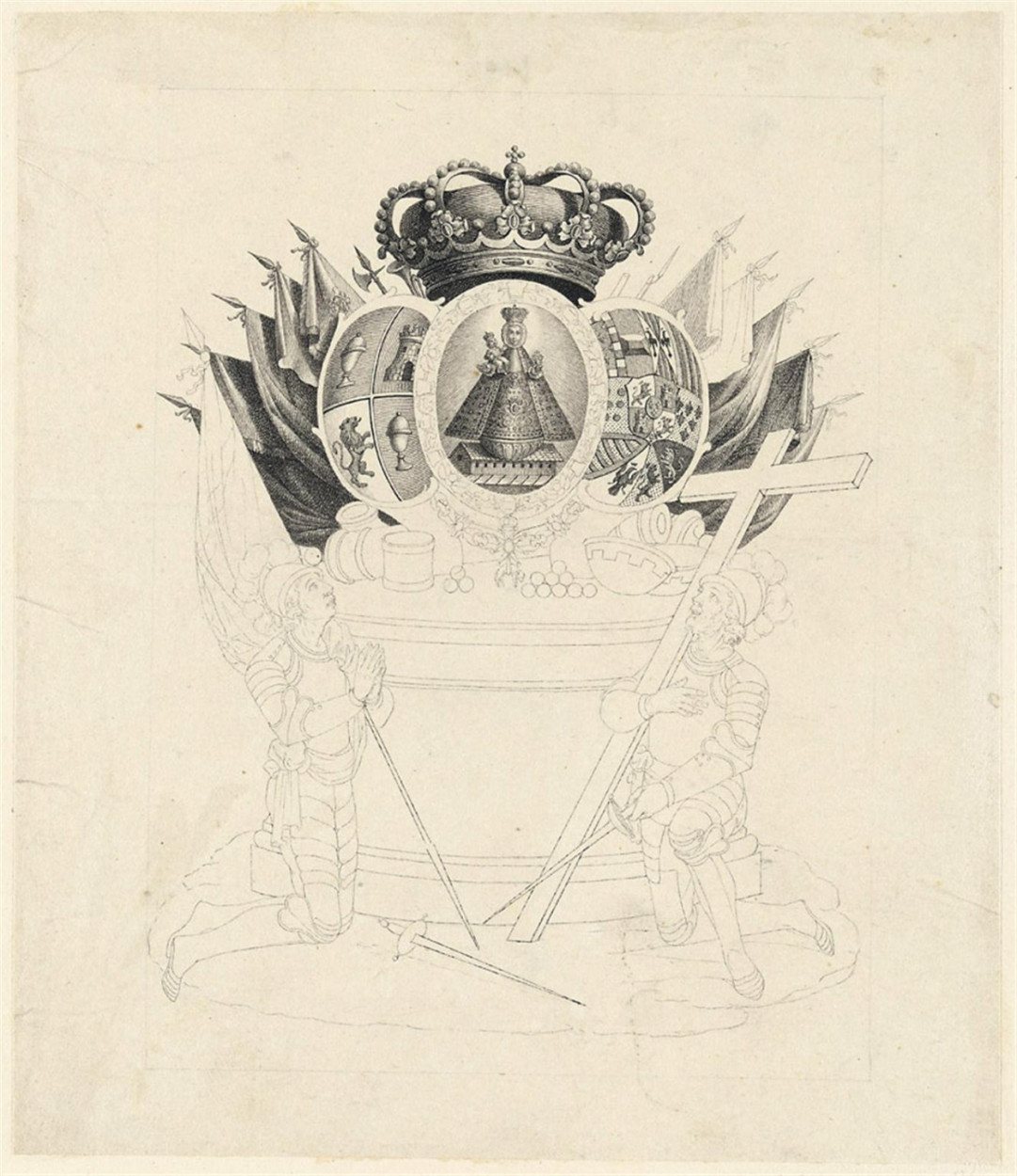
José Atanasio Echeverría
Die "Jungfrau von Covadonga" als Patronin von Asturien und der Spanischen Monarchie mit König Pelayo und König Favola, Frühes 19. Jahrhundert
King Pelayo and King Favila kneel before an image of the Virgin of Covadonga placed above a building that symbolizes her original wooden temple inside the cave, which burned in 1777. Around the Virgin, a series of symbols link her image to the Spanish monarchy: the royal crown, the Golden Fleece, the necklace and Grand Cross of the Order of Charles III, and the coat of arms of Bourbon Spain. The escutcheon on the left is divided into four quarters occupied, respectively, by a castle, a lion, and the chalice of the Eucharist on a blue background (horizontal hatching represents blue in black-and-white heraldic depictions) considered that of Asturias-erroneously, as Gaspar Melchor de Jovellanos pointed out.[1]
The iconography of the drawing closely follows earlier models known through some prints published by the Royal Congregation of Our Lady of Covadonga in Madrid.[2] In fact, it combines several of those works. Thus, for example, the upper part with the image of the Virgin, the coats of arms, and the royal symbols are close to an anonymous print from the late eighteenth century at the Biblioteca Nacional.[3] Similarly, the images of Pelayo, on the right, and Favila, on the left, closely resemble the statues that Roberto Michel (1720-1786) sculpted for the church of the convent of the Carmelitas Descalzos in Madrid. Now lost, it is still known through a print by Joseph Andrade (active 1715-1766).[4]
Since the coats of arms, the image of the Virgin, and the monarchs were drawn reversed, it can be assumed that this was the preliminary drawing for an etching. As in inv. no. 38518 (cat. no. 33), José Atanasio Echeverría shows himself to be a master of fine lines, which is surely why he not only participated in botanical expeditions but was also charged with compiling the inventory of the Hamburg collection.
Jens Hoffmann-Samland
1 Sánchez Badiola 2008, 23.
2 Regarding the iconography of the Virgin of Covadonga, see Crabiffosse Cuesta (dir.) 2001. Our thanks to Javier Barón for his suggestions about the iconography and earlier models.
3 Ibid., cat. 47, 222-23.
4 Ibid., 483-87.
